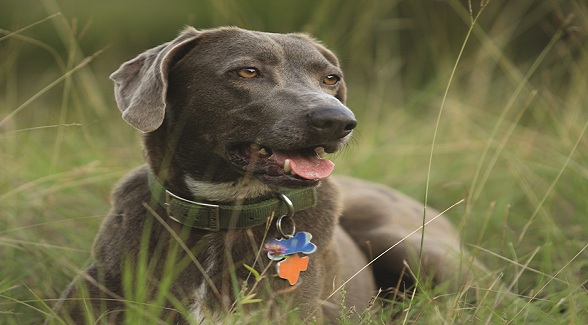
In the heart of cattle country, the Blue Lacy shines.
By Henry Chappell
In 2005, the State of Texas designated the Blue Lacy Texas’s official dog breed. This selection took place almost 150 years after Kentucky’s Lacy brothers — Frank, George, Ewing, and Harry — arrived in the Lone Star State and began developing working dogs that could bay the biggest, meanest hogs and the wildest cattle. The brothers also deemed treeing raccoons, squirrels, bobcats, and cougars as well as tracking wounded game essential.
According to legend, the Lacy line began with greyhound-scent hound-coyote crosses. Each generation’s breeding stock was then chosen for natural herding and hunting ability. The result was a sleek, medium-sized cur that was beautifully adapted to stock herding and hunting in the Texas Hill Country.
The Lacy’s tight, sleek coat requires minimal grooming. In addition to the gun-metal or slate gray color that earned the breed the name Blue Lacy, Lacys can be yellow, red, or tricolored. Hence, the more general name: Lacy Dog.
Although they’ve long been favored by stockmen and hog hunters, Lacy Dogs are gaining a reputation as superb trackers of wounded deer. Good Lacy Dogs tree readily, and, like other curs, they’re typically silent or semi-open on the track, with a hard, chopping treeing bark.
Do:
– Join the Lacy Game Dog Association: www.lacydog.com.
– Select pups from only working lines listed with the Lacy Dog Game Registry: www.bluelacydogs.org.
– Make your Lacy Dog a member of the family.
Don’t:
– Resort to harsh discipline. Despite their grittiness toward stock and game, Lacy Dogs have surprisingly soft temperaments.
Click here to download a copy of the Spring 2012 issue of The Land Report.




